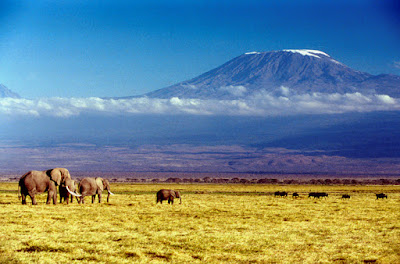
It is an amazing experience to reach the summit of Mount Kilimanjaro. To stand under the signpost for the mandatory picture (for the "Look! I made it! show-&-tell when you come home), enjoying the view of Afica, and knowing that in spite of the cold, the thin air, and the long climb through the night, you have made it to top, is beyond words.
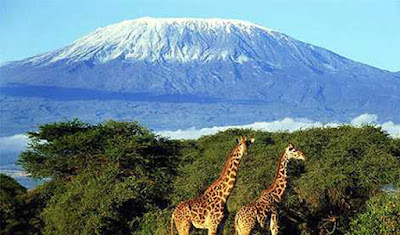
Mount Kilimanjaro is the tallest mountain in Africa, and the worlds highest free-standing mountain with its's 5,895 meters above sea level (19 341 ft). Kilimanjaro is an old vulcano, and consists of three volcano cones; Kibo (5895 m) Mawenzi (5149m) and Shira (3962m). Uhuru Peak is the highest point and lies on the rim of the Kibo crater. The whole mountain is a National Park and there is a wide array of plant and wildlife there. Many species can only be found on here, for example the Kilimanjaro Impatiens, a pretty little flower that grows in the jungle on the mountain floor. Given its proximity to the Equator, and it's hight, climbers can experience 4 different vegetation sones, from jungle forest, through moorland tod alpine desert, with the ice cap at the very top.
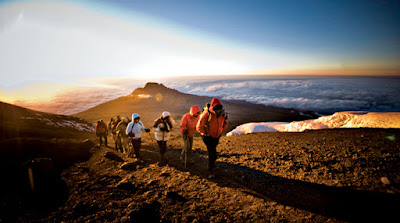
Hans Mayer is recognised as he first European to reach the top of Kilimanjaro in 1889. He was not the last. Every year 20 000 people from all over the world come to Mount Kilimanjaro to try and reach the summit, and it has become big business for the locals. Several thousand people work as guides and porters, in addition to the many park rangers that take care of the Naional Park.

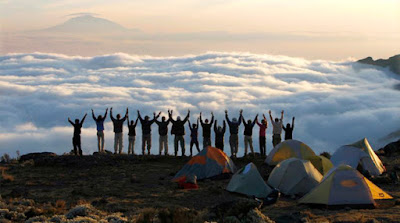


Climbing Mount Kilimanjaro is not easy, though it is the highest mountain one can summit without climbing gear. There are 6 official routes, with various lengths and difficulty level. Marangu route is the shortest (5-6 days), and the only one with huts for accomadation. The other routes are longer, and you sleep in tents. Some are pretty demanding, but the longer approach gives you more time to acclimatise you to the height, wich improves your chance of making the summit.
The climb is technically not difficult, but the altitude, the cold and the occationally strong wind makes it a demanding and potentially dangerous climb. One needs to be well prepared, and bring the right gear. Altitude sickness is the biggest danger, it is estimated that about 10 people die on the mountain every year of it. However, for most people it is a matter of walking slowly, taking ones time to acclimatise and drinking lots of water, and going back down, if one does'nt get better.







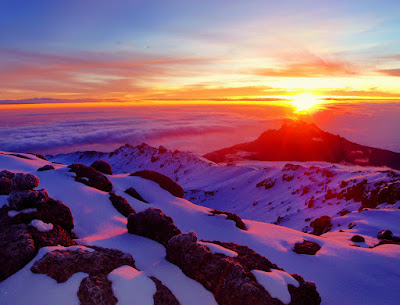











0 comments:
Post a Comment